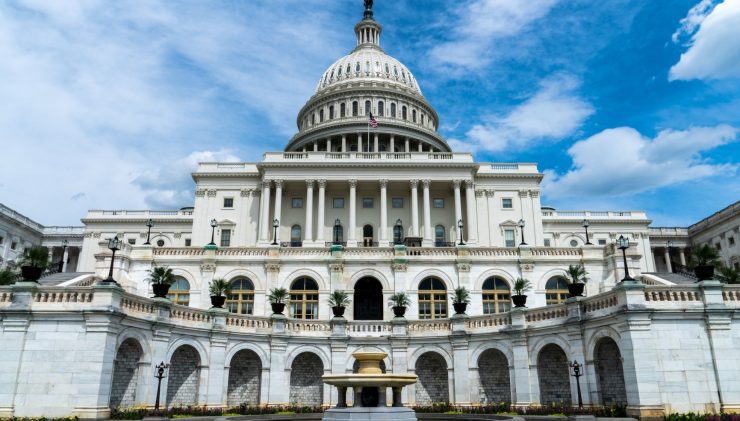 Auto Claims Trends: Frequency, Severity, Repair Costs, and Turnaround Times
Auto Claims Trends: Frequency, Severity, Repair Costs, and Turnaround TimesOn March 27, U.S. Congress approved the Coronavirus Aid, Relief, and Economic Security (CARES) Act—a sweeping, $2 trillion relief package in response to the COVID-19 outbreak. The Act provides critical financial support to individuals and businesses. Included in the CARES Act are provisions that affect retirement plans, which could help relieve some of the financial stress individuals and employers are facing. Specifically, relief provided in the CARES Act:
- Expands distribution and loan (including loan repayment) rules and limits for retirement accounts in eligible plans (generally, qualified plans, 403(b) plans, and eligible governmental 457(b) plans) and IRAs;
- Waives the 10% additional tax on such qualifying distributions from those same eligible plans and IRAs, that would otherwise apply to early distributions (generally, prior to age 591/2); and,
- Provides a temporary waiver of required minimum distributions (RMDs) due to be paid in 2020 (including 2019 RMDs due to be paid by April 1, 2020).
Qualification for a coronavirus-related distribution or loan would apply if the individual (or individual’s spouse or dependent) is diagnosed with the virus or the individual suffers adverse financial consequences due to quarantine, furlough, layoff or reduced work hours due to the virus, lack of childcare or closing or reduced hours of a business owner/operator due to such a virus.
For in-plan participant accounts, many of the provisions will only be available if elected by the Plan Sponsor. In addition, Plan Sponsors that elect them generally will need to amend their plan documents accordingly, before the last day of the first plan year beginning after January 1, 2022 (January 1, 2024 for governmental plans).
More details on the relief provisions that are included in the CARES Act are provided below.
Retirement Assistance
Plan withdrawals and loan relief:
The Act would provide tax relief for retirement plan and IRA “coronavirus-related distributions” taken by individuals on or after January 1, 2020 and before December 31, 2020. For any such distribution, the Act:
- permits in-service distributions, even if such amounts are not otherwise distributable from the plan under the Internal Revenue Code;
- provides an exception to the 10% early distribution penalty;
- exempts the distribution from the 402(f) requirements and mandatory 20% withholding applicable to eligible rollover distributions;
- permits the individual to include income attributable to the distribution over the three-year period beginning with the year the distribution would otherwise be taxable; and
- permits recontribution of the distribution to a plan or IRA within three years, in which case the recontribution is generally treated as a direct trustee-to-trustee transfer within 60 days of the distribution.
Employers would be permitted, but not required, to make available distributions described above and accept any repayments. This special tax treatment would be limited to aggregate distributions of $100,000.
Definition of “coronavirus-related distribution:
To be a coronavirus-related distribution, a distribution must be made to an individual:
- who is diagnosed with the virus SARS-CoV-2 or with coronavirus disease 2019 (COVID-19) by a test approved by the Centers for Disease Control and Prevention,
- whose spouse or dependent (as defined in section 152 of the Internal Revenue Code of 1986) is diagnosed with such virus or disease by such a test, or
- who experiences adverse financial consequences as a result of being quarantined, being furloughed or laid off or having work hours reduced due to such virus or disease, being unable to work due to lack of child care due to such virus or disease, closing or reducing hours of a business owned or operated by the individual due to such virus or disease, or other factors as determined by the Secretary of the Treasury (or the Secretary’s delegate).
In addition, the Act provides that: “The administrator of an eligible retirement plan may rely on an employee’s certification that the employee satisfies the conditions [described above] in determining whether any distribution is a coronavirus-related distribution.”
Plan loans:
First, the CARES Act would increase the maximum loan limit for qualified individuals to the lesser of:
- $100,000 (from $50,000); or
- the greater of $10,000 or 100% (from 50%) of the present value of the participant’s vested benefit.
This increased loan amount would be available for loans made during the 180-day period beginning on the date of enactment. Second, the Act would extend the due date of any qualified individual’s loan repayment that would otherwise be due during 2020 (but on or after the date of enactment) to one year after the otherwise applicable due date. For this purpose, a qualified individual is an individual who would qualify for a coronavirus-related distribution under the above conditions.
Required minimum distributions (“RMDs”):
RMDs for 2020 are waived for 2020 for all types of DC plans (including 401(k), 403(b), and governmental 457(b) plans) and IRAs. This also applies to RMDs due in 2020, but attributable to 2019.
It is a true waiver. The client does not need to make up the distribution next year.
There is no language in the bill saying that if someone already took their RMD, they can put the money back, similar to a 60 day rollover. However, in 2009, the last time there was RMD relief, the IRS allowed RMDs made to be rolled back. We cannot assure you that the IRS will do that again, but the case for this relief is much stronger this time than in 2009, so we would be surprised if this were not allowed. If this is not allowed, individuals eligible for a coronavirus distribution who received such a distribution in 2020 can roll it back, up to $100,000.
Plan amendments:
The plan amendment deadline for adopting any of the relief provided under the CARES Act above would be no earlier than the last day of the first plan year beginning on or after January 1, 2022 (January 1, 2024 for governmental plans).
Individual Assistance
2020 recovery rebates for individuals:
All U.S. residents with adjusted gross income up to $75,000 ($150,000 married), who are not a dependent of another taxpayer and have a work eligible social security number, are eligible for the full $1,200 ($2,400 married) rebate. In addition, they are eligible for an additional $500 per child. This is true even for those who have no income, as well as those whose income comes entirely from non-taxable means-tested benefit programs, such as SSI benefits.
For the vast majority of Americans, no action on their part will be required in order to receive a rebate check as IRS will use a taxpayer’s 2019 tax return if filed, or in the alternative their 2018 return. This includes many low-income individuals who file a tax return in order to take advantage of the refundable Earned Income Tax Credit and Child Tax Credit. The rebate amount is reduced by $5 for each $100 that a taxpayer’s income exceeds the phase-out threshold. The amount is completely phased-out for single filers with incomes exceeding $99,000, $146,500 for head of household filers with one child, and $198,000 for joint filers with no children.
Please stay healthy and contact Rebecca Tapia if you have any questions or concerns.
IMPORTANT DISCLOSURES
This material is for general information only and is not intended to provide specific advice or recommendations for any individual. There is no assurance that the views or strategies discussed are suitable for all investors or will yield positive outcomes. Investing involves risks including possible loss of principal. Any economic forecasts set forth may not develop as predicted and are subject to change.
References to markets, asset classes, and sectors are generally regarding the corresponding market index. Indexes are unmanaged statistical composites and cannot be invested into directly. Index performance is not indicative of the performance of any investment and do not reflect fees, expenses, or sales charges. All performance referenced is historical and is no guarantee of future results.
All data is provided as of March 27, 2020.
This Research material was prepared by LPL Financial, LLC. All information is believed to be from reliable sources; however LPL Financial makes no representation as to its completeness or accuracy.



